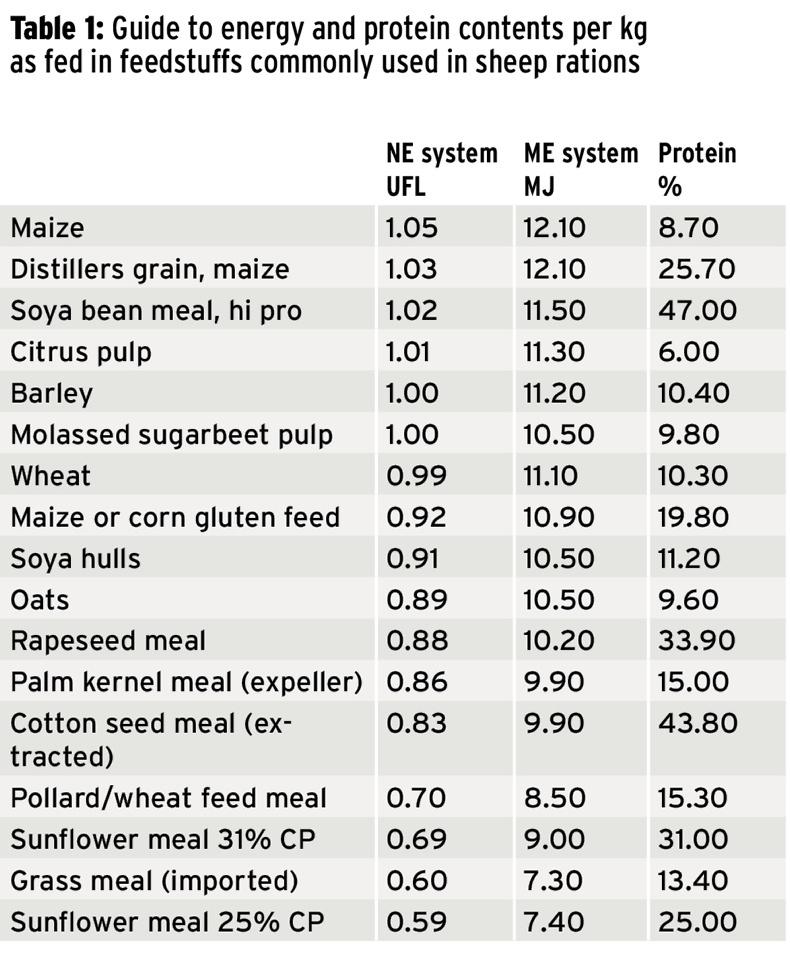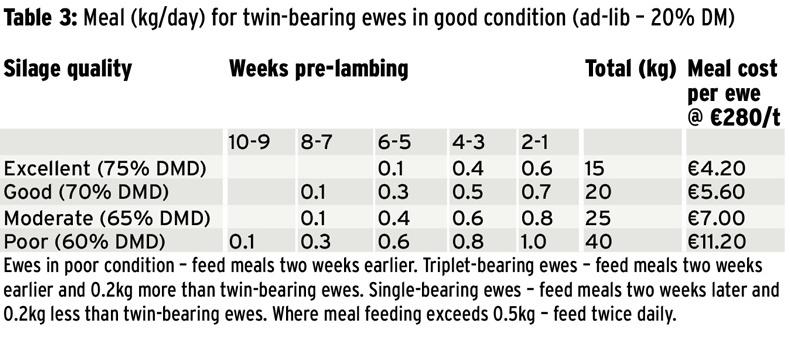
LOYALTY CODE:
The paper code cannot be redeemed when browsing in private/incognito mode. Please go to a normal browser window and enter the code there

LOYALTY CODE:
The paper code cannot be redeemed when browsing in private/incognito mode. Please go to a normal browser window and enter the code there
This content is copyright protected!
However, if you would like to share the information in this article, you may use the headline, summary and link below:
Title: Feeding tips for lambing
Getting feeding right and giving lambs the best possible start will underpin subsequent performance.
https://www.farmersjournal.ie/feeding-tips-for-lambing-255162

ENTER YOUR LOYALTY CODE:
The reader loyalty code gives you full access to the site from when you enter it until the following Wednesday at 9pm. Find your unique code on the back page of Irish Country Living every week.

CODE ACCEPTED

You have full access to farmersjournal.ie on this browser until 9pm next Wednesday. Thank you for buying the paper and using the code.

CODE NOT VALID
Please try again or contact us.
For assistance, call 01 4199525
or email subs@farmersjournal.ie
Sign in

Incorrect details
Please try again or reset password
If would like to speak to a member of
our team, please call us on 01-4199525
Reset
password
Please enter your email address and we
will send you a link to reset your password

If would like to speak to a member of
our team, please call us on 01-4199525
Link sent to
your email
address
![]()
We have sent an email to your address.
Please click on the link in this email to reset
your password. If you can't find it in your inbox,
please check your spam folder. If you can't
find the email, please call us on 01-4199525.
![]()
Email address
not recognised
There is no subscription associated with this email
address. To read our subscriber-only content.
please subscribe or use the reader loyalty code.
If would like to speak to a member of
our team, please call us on 01-4199525
 This is a subscriber-only article
This is a subscriber-only article
Update Success !
It is well-known that the nutritional requirement of ewes increases rapidly in the final six to eight weeks of pregnancy. The energy requirement for a 80kg twin-bearing ewe builds on a continual basis from about 12 MJ ME/kg DM to 20.2 MJ ME/kg DM in the final weeks, ‘while the protein requirement spikes in the last two weeks of pregnancy and jumps higher in early lactation.
This requirement can be met by a forage/concentrate diet with the balance dependent on the quality of forage on offer. Table 3 details guideline concentrate supplementation for 75kg to 80kg twin-bearing ewes in good body condition. This can be reduced or increased by 30% for single- and triplet-bearing ewes, respectively. Where forage quality is particularly poor, it should only act as a source of roughage in late pregnancy with concentrates providing the main source of energy.
The general recommendation is a protein content of 18% to 20% for medium litter sizes (1.6 to 1.9 lambs per ewe). Given the low cost per animal of increasing protein content, it may be more straightforward if ordering concentrate a few weeks before lambing to purchase the feed that will be fed in late pregnancy and early lambing. Soya bean meal is the preferred protein source given its high energy content as listed in Table 1. Emphasis should be placed on targeting high-energy ingredients with the overall feed possessing a metabolisable energy content in excess of 12 MJ ME/kg DM.

Is a high-concentrate diet the answer to poor-quality silage?
Last summer was very mixed in terms of conditions for making silage. Those who harvested in early June had ideal conditions but as the summer progressed conditions in many parts of the western half of the country, in particular, were difficult. This has led to a situation where there is a marked difference in the quality of silage available on farms. If not already complete, analysing the quality of silage available should be the starting point in planning late-pregnancy feeding programmes.
Some farmers caught with very poor quality silage have enquired about switching to a high-concentrate diet in late pregnancy. Some are worried about addressing nutritional needs, while others are concerned that poor quality silage will depress appetite or soil-contaminated silage may lead to listeriosis.
High-concentrate diets have a number of benefits and suit some systems ideally.
Where silage quality is questionable, a high-concentrate diet has the ability to offer a stabilised diet. The same principles apply as with any feeding programme in terms of penning, on litter size, body condition score, etc. The other important aspect to consider is if there are adequate facilities and sufficient feeding space available to feed all ewes at once.
Feeding levels in general are doubled on a high-concentrate diet. The general recommendation for a twin-suckling ewe in good body condition is 1.2kg in weeks six to five pre-lambing rising to 1.4kg for weeks four and three and 1.7kg in the final two weeks of gestation. This will increase the total volume of meal fed to between 55kg and 60kg, which at a cost of €280/t is about €15 to €17 for concentrate costs alone.
It is also important when feeding such a high level of concentrates to ensure that ewes are offered a source of fibre. Straw is the ideal choice but care must be taken to ensure that straw is good quality considering the difficult harvest last autumn.
Where offering straw, care also needs to be taken to ensure that ewes are not consuming straw bedding that is contaminated with faeces as this can lead to abortion caused by campylobacter. Instead, ewes should be offered twice their straw intake (1.5kg) along feeding passages or in feeders, with straw not consumed used for bedding.
Another consideration to take into account is the protein content of concentrates offered with straw normally low in protein. A protein content of 16% to 18% will generally suffice with a higher meal intake ensuring adequate intake. Concentrates offered should also be adequately balanced with minerals.
The final aspect to take into account is the feeding routine. Ewes should be built up slowly to these levels of meals, split twice daily, to prevent digestive upsets. Single-bearing ewes will require about 30% lower than the levels detailed above with triplets requiring 30% extra or practically ad-lib meals.
Post-lambing feeding
The ideal for every farm is letting a ewe in good body condition and healthy lambs to a plentiful supply of grass 24 to 48 hours after lambing.
Where sufficient grass is available (at least 4cm to 5cm), and ground conditions allow for good utilisation, twin-suckling, midseason lambing ewes in adequate body condition will not require concentrate supplementation. This is as good quality spring grass contains in the region of 12.2MJ ME/kg DM and 12.4MJ ME/kg DM, similar or slightly lower than a kilo of good quality barley.
The experience of the last few lambings shows, however, that the best-made plans often take a turn for the worse. Farms that closed up paddocks in adequate time last autumn and where possible have spring nitrogen applied will be in the best situation even if grass growth falls behind target.
Where grass supplies are scarce, however, or weather prevents ewes and lambs from being turned outdoors, then the feeding programme will need to be altered.
Healthy midseason lambing ewes in good body condition can suffer some level of underfeeding by mobilising body reserves or essentially milking off their own back to cover the deficiency.
The level of weight loss should be kept to a maximum of half a condition score with ewes not falling below a body condition score of 2.5.
The level of supplementation that is required will differ depending on the quality of forage for ewes remaining indoors post-lambing or the volume of grass available.
Table 2 details a number of different scenarios and the recommended supplementation for single- and twin-suckling ewes to ensure that ewes reach their peak milk yield (three to four weeks in twin-suckling ewes and five weeks in singles).
Concentrate supplementation for ewes retained indoors in the longer term should be reduced after week four to five and phased out by week eight with concentrates better utilised directly to lambs at this stage.
Click here for full-size table

SHARING OPTIONS: